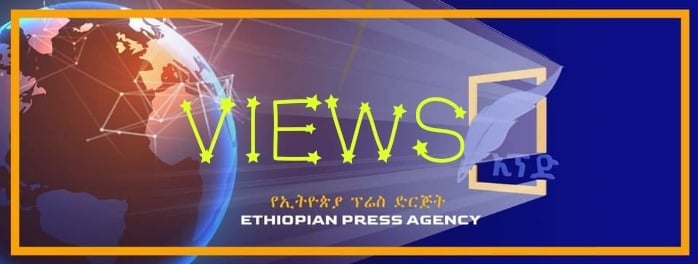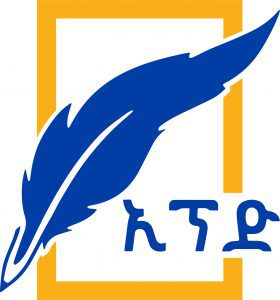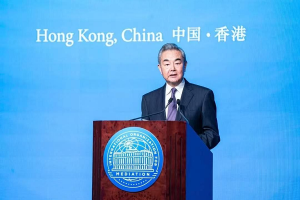
There were various movements organized and managed by Ethiopians who stood for justice, freedom, equality, reconciliation, accountability and respect for the basic human rights of all the people of Ethiopia. They were inspired by the fact that “No one will be free until all are free.” The Solidarity Movement for New Ethiopia (SMNE) was one of these movements. It was a political, grassroots social justice movement of diverse Ethiopians. It was formed by Obang Metho, the Executive Director of SMNE, with the goal of mobilizing Ethiopians in the Diaspora and within Ethiopia to unite in a partnership and coalition across ethnic, religious, cultural, regional and political lines. The objective was to build a society where “humanity comes before ethnicity or any other differences.” The SMNE has several branches in various cities and countries throughout the world, including Ethiopia.
Its work has included international human rights advocacy, raising awareness, refugee advocacy, investigation and analysis, reconciliation work, networking and coalition building. It also appreciated the commitment of other Ethiopian associations that were engaged in taking people out of poverty. SMNE supported the idea of the critical role played by smallholder farmers, especially women, in transforming agriculture and building thriving economies. It was hoped that every effort was made on the ground to realize this goal. Unfortunately, this effort had not been undertaken in most places in the past. The efforts of SMNE abroad encouraged people to form new partnerships with foreign investors with the hope of supporting food security for the poor people of Ethiopia.
The stated goal of SMNE to work with African leaders and people was carefully integrated into its plan and program. The implementation of the plan and program was monitored to check if its goal was fulfilled. In countries like Ethiopia, meaningful government reformshad to be planned initially. The plan included privatization of land, the opening of political space, the restoration of freedom of expression, the rule of law, the representation of stakeholders at every level and the respect of civil and human rights. But, all sectors of society had been controlled tightly by the TPLF regime where access to private enterprise was strictly controlled by the political organ making it inaccessible to the majority of Ethiopians.
The SMNE had it on record that the majority of the Ethiopian people lived in the rural areas and most were small subsistence farmers. These people, however, had no voice and had been pushed aside. To enable the local people participate in political, economic and social activities, there must be real transparency. But, transparency and accountability had never existed in Ethiopia in the past three decades. These situations needed to be corrected if development initiatives were to serve the poor Ethiopians. Eliminating corruption was a precondition for such initiatives to succeed. Ethiopians were subjected to starvation because of corruption, autocracy, lack of democracy, and reign of impunity.
The Ethiopian movements abroad have been able to show how foreign assistance had been misused by political dictators in the country. These politicians had engaged themselves in abusing local and foreign resources that had been earmarked for economic development. Ethiopians living abroad tried in vain to ensure that the poor people benefitted from foreign aid by linking them with donors. They also wanted to make sure that party members were disabled to access and manage foreign aid like food, seed, fertilizers, jobs and educational opportunity. They believed that those people who expressed their views should not be subjected to punitive measures based on legal measures such as anti-terrorism laws. Instead, the application of genuine democratic measures was more important. Democratic “rhetoric” would not create the broad-based stakeholder inclusion that was necessary to make the SMNE program and projects effective in achieving its goals.
The SMNE had exposed the TPLF leaders who had promoted food security at international meetings, while blocking the small holder Ethiopian farmers from being food self-sufficient. Ethiopians had been forced from their land, lowering their food security and making them dependent on food aid. Most of the donor funds had not been used in the regions where the majority of the people had been marginalized. Instead, these regions had been the locations of the largest land acquisitions given to foreign agricultural companies in which the TPLF had interest in producing mostly for export to earn foreign exchange. These regions had long been known for their potential to be the bread basket of Ethiopia; yet, no aid funds had gone into their agricultural development. The people had been forced to use obsolete and outdated methods of agriculture. These regions had become examples of land grabs in Africa.
Instead of empowering the smallholder farmers, the TPLF junta had subjected them into forced resettlement in the outskirts of their respective regions. Despite the claims of the junta that this was a voluntary arrangement, the SMNE had proved it to be false. When the junta came to power it had stated its goal of ensuring “three” meals a day for every Ethiopian. Two decades later, after receiving billions of dollars in aid, more Ethiopians had gone hungry, having only one meal or less in a day. Ethiopia’s only television station, under government control, had even reported that children were fainting in the classroom from hunger. Most Ethiopians had reported that they had great fear of failing to feed their families.
Despite claims of the TPLF junta of low inflation and double-digit economic growth, the SMNE had been able to reveal that the rate of economic growth was low while inflation was very high for most of the years. Ethiopia was considered one of the hungriest countries in the world in the past decades. Even with new initiatives aimed at raising food security and combating global hunger, more Ethiopians had been subjected to famine, malnutrition, deprivation and starvation. This was due to the repressive nature of the TPLF leaders. As SMNE put it, autocrats of Ethiopia had gained support from the so-called Western democratic nations for “cooperating” in fighting the War on Terror. The ethnic-based government had passed an anti-terrorism bill with the distinct purpose of using it for fighting terrorism, but it was applied for suppressing political opponents at home. The law had been vague so that it could be used as a tool to curb freedom of speech, press and assembly.
The law had been used to attack human rights activists, journalists, members of the media and anyone who could speak out against the iron-fisted rule of the junta. The law had resulted in the imprisonment of most of those outspoken critics of the regime. Despite the regime’s claims of working in line withthe Global War on Terror and agreements entered into under the UN, the TPLF junta had a vested interest in maintaining the battle within the country. On the other hand, democratic activists and journalist had been convicted on terrorism charges for “writing” on the topic of freedom of speech and assembly. Foreign journalists had also been imprisoned for attempting to report on the TPLF-sponsored human rights violations. According to the law, such violations are punishable with rigorous life imprisonment or with death.
The TPLF policies had made it difficult for the civic sector to do business. A repressive law against civil society had “prohibited” any organization that received more than ten percent of its budget from foreign sources for advancing human and democratic rights. The society could not promote equality of nations, nationalities, peoples, gender and religion. It was not allowed to encourage the rights of the disabled and children nor could it support conflict resolution or reconciliation as well as the efficiency of justice and law enforcement services. This had meant the closure of most independent civic organization in Ethiopia. In their place, the regime had created pseudo-organizations or appointed leaders of established groups. The TPLF regime had controlled all groups, including the religious ones.
The TPLF junta had used foreign funds with accountability neither to the Ethiopian people nor to the donors. It also controlled the civic society that was financed by foreign sources. The junta had demanded report on the flow of funds to these societies. In this regard, it had been engaged in money laundering, bribes, violence, and imprisonment. Civic societies had faced insurmountable obstacles of the junta within the country. It had been an obstacle to a truly noble initiative by these societies to raise millions of people out of poverty. On the other hand, the people of Ethiopia were ready to work together with these societies in achieving the goal of raising peoples’ voices at the global level.
The SMNE had stressed the need for solidarity of Ethiopians at home and abroad. These required the cohesion of the Ethiopian people who have been inoculated against the virus of institutionalized tribalism, which had been officially adopted under the deceptive name of Ethnic Federalism by the TPLF. It was a way to placate some ethnic groups; however, the result of it has been threatening the survival of Ethiopia as a country. It had been intentionally set up to ensure that Ethiopians could not come together under a consensual agreement for the benefit of all people. This could have been a threat to the goals of the TPLF that had sought to achieve perpetual hegemony by destabilizing Ethiopia.
One of the goals of the TPLF junta had been to divide Ethiopians along ethnic lines, using a divide and conquer formula so that people would not achieve unity. Instead, they had to live as separate ethnic groups, not even as individual citizens. It had been a recipe for destruction. This indoctrination had reached its pinnacle as young people started to believe that their primary identity was their tribe. The junta movement, however, had nearly come to its end in the recent war between the Federal Government and the armed TPLF gangs. These gangs or Banda had been used in the frontline behind which were the Western White supremacist neocolonialist that manipulated the war on Ethiopia.
The solidarity movement of Ethiopians has been aware of the conspiracy of the West to dismantle the country as they had tried to do so in the past centuries. But Ethiopia survived these dangers through the unity of the people, despite the treacherous act of local traitors and conspirators. The TPLF junta, the great quisling, had suffered humiliating defeat in the hands of the Ethiopian people, who stood strongly united behind the Government of Ethiopia. Those poor Ethiopians who suffered mass murder, rape, plunder, destruction of property, dismantling of schools, hospitals and public services by the junta are now free. The poor people of the Amhara and Afar regions of Ethiopia had suffered from massacres, exterminations, annihilation, carnages and butcheries that had been carried out by the TPLF as sponsored by the Western Whiteman. To reverse the carnage, the solidarity movement of new Ethiopia has been vital.
Editor’s Note: The views entertained in this article do not necessarily reflect the stance of The Ethiopian Herald
BY GETACHEW MINAS
The Ethiopian Herald 8 May 2022




